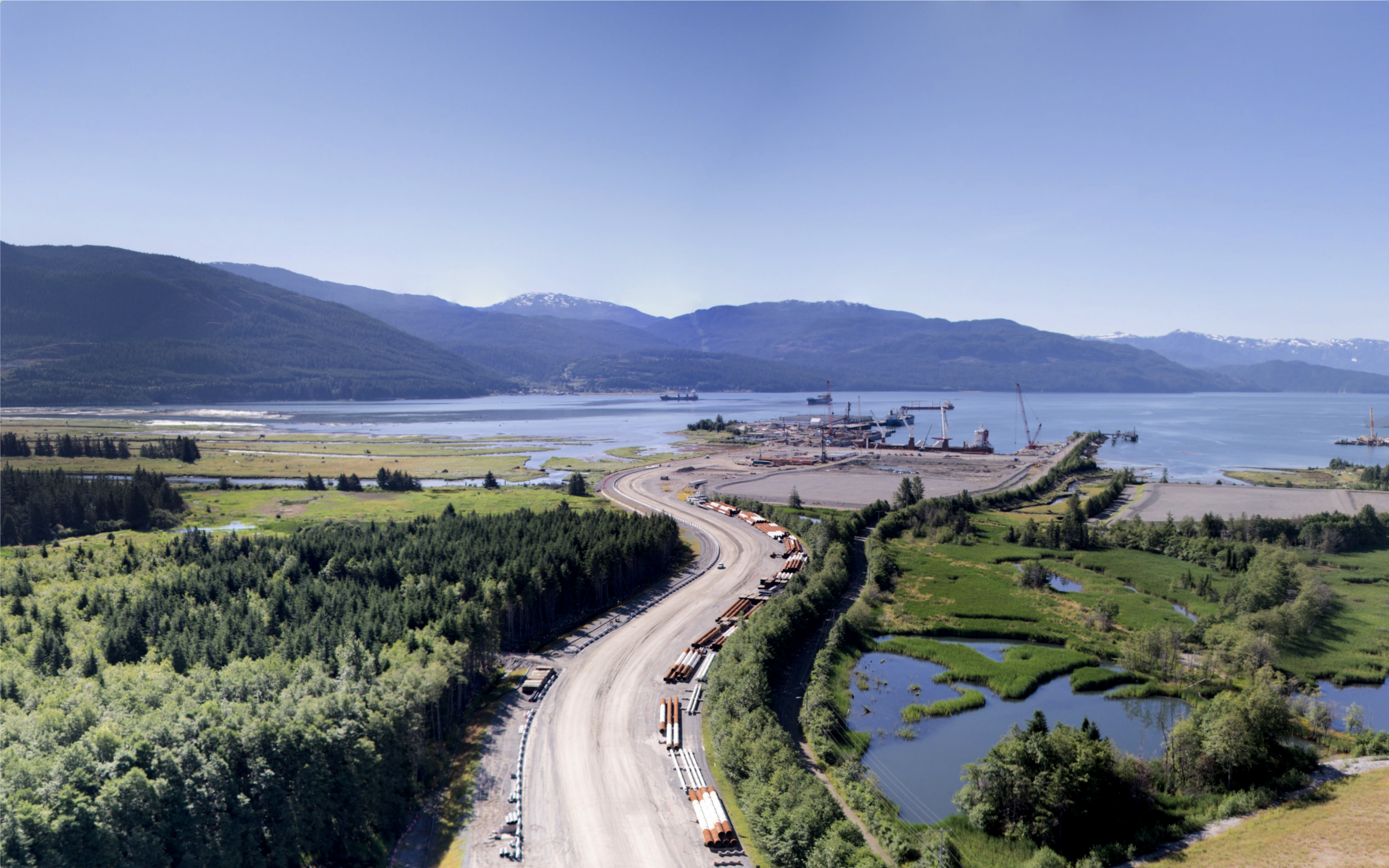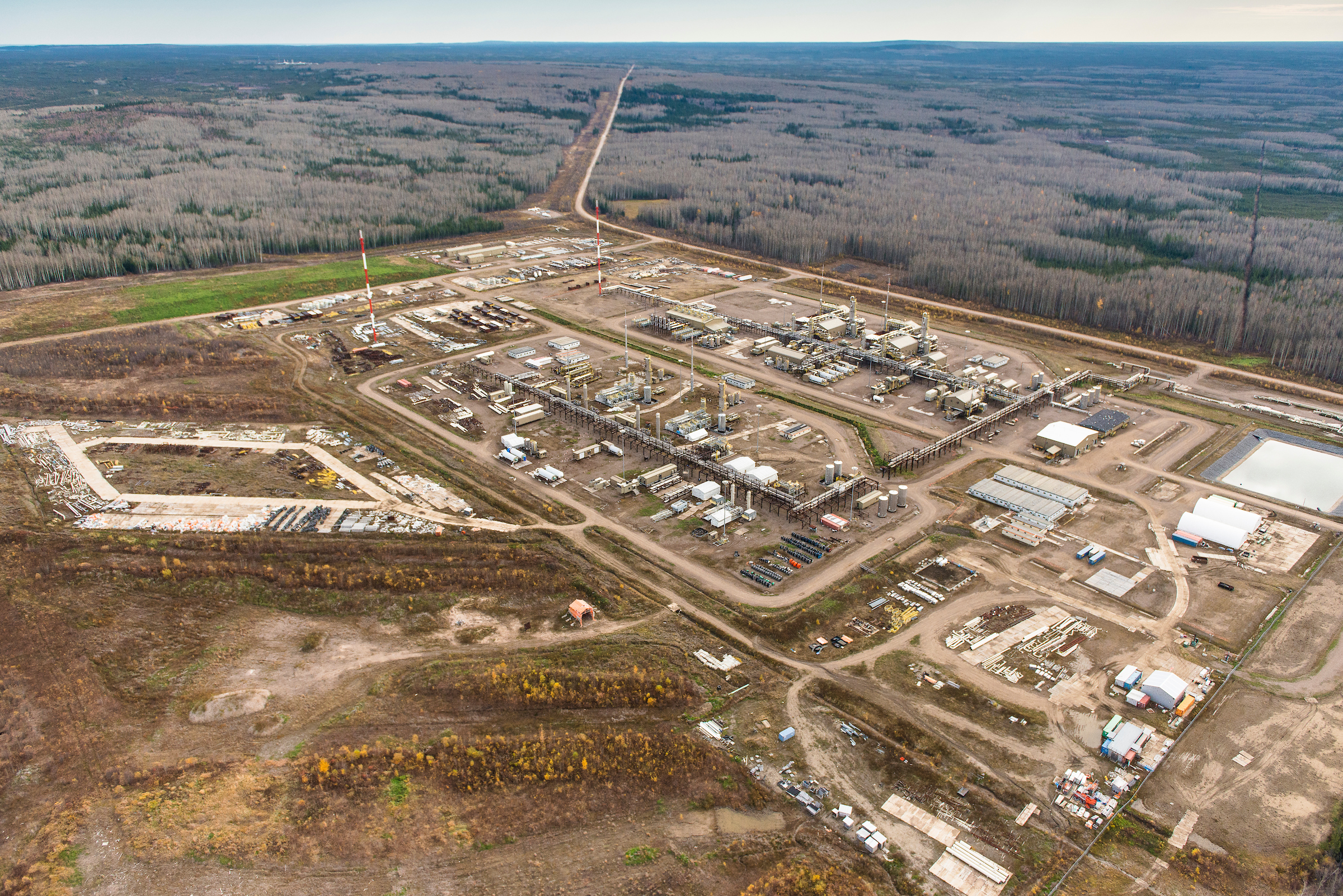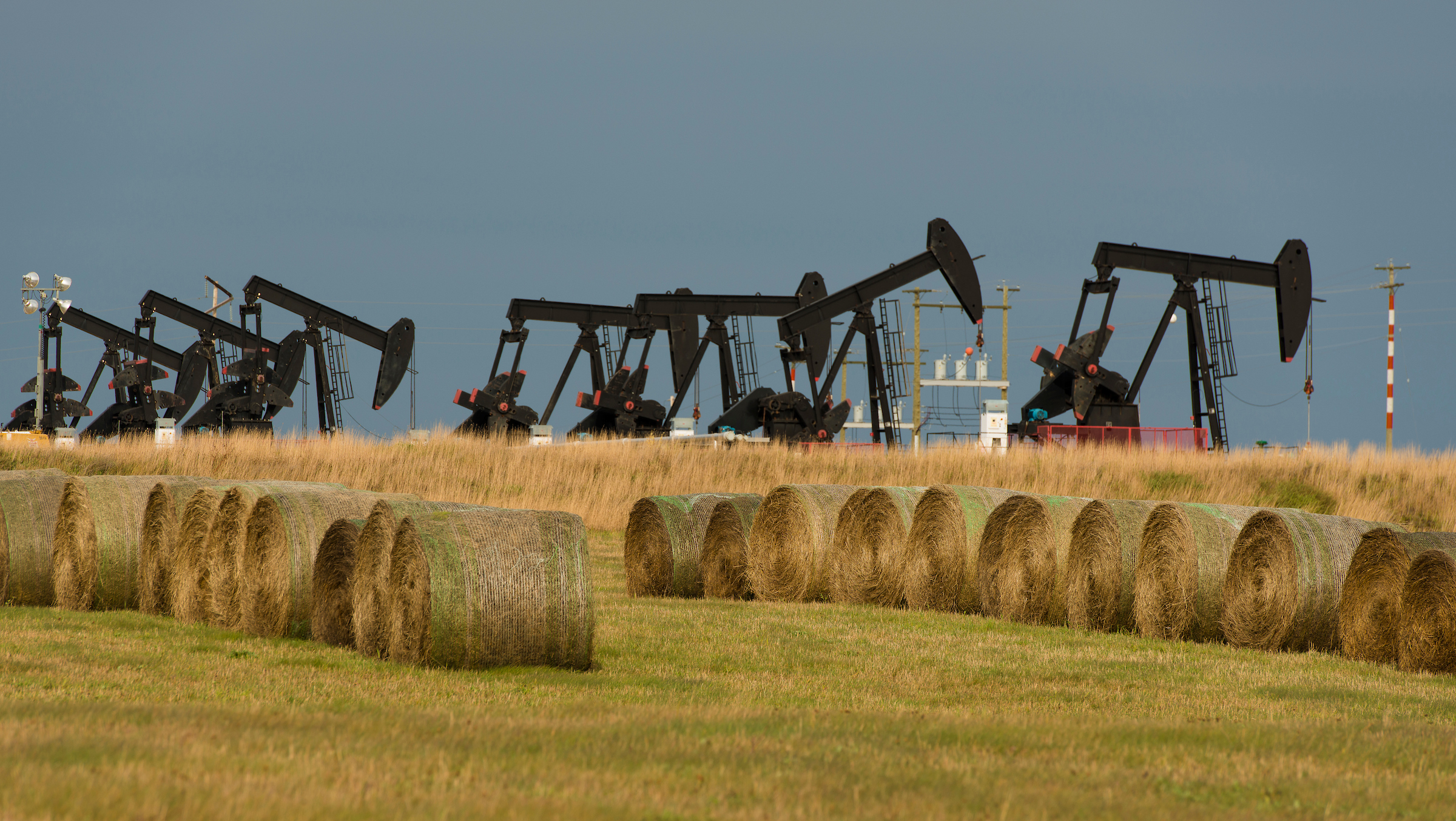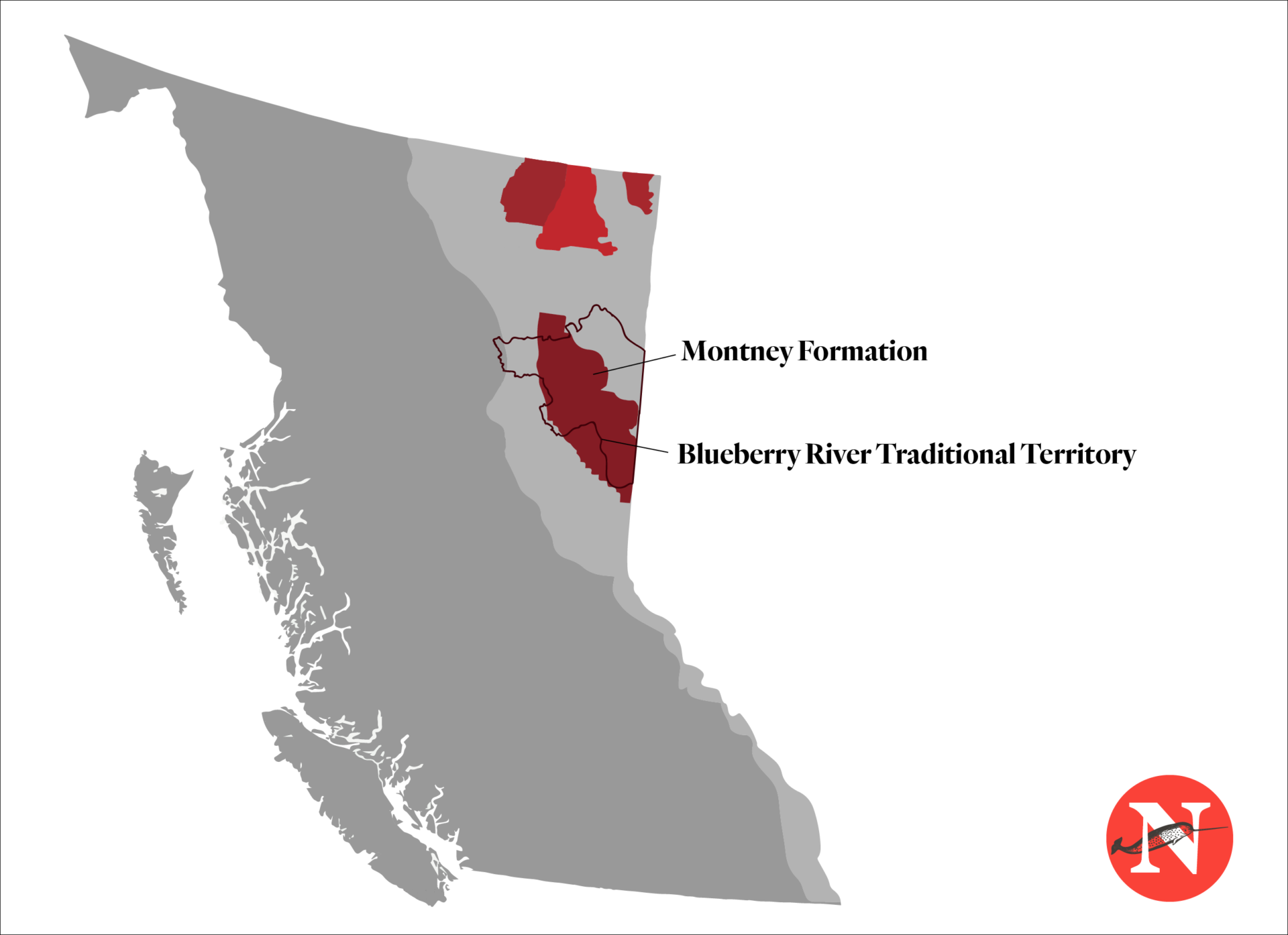
A dam destroyed their river. 61 years later, two First Nations fought for justice
A new documentary, Nechako: It Will Be a Big River Again, dives into how two...
Much has changed since LNG Canada made the decision in 2018 to proceed with its multibillion dollar natural gas project in British Columbia.
Three years later, the project is caught up in a dispute about who will pay for billions of dollars in cost overruns that have threatened the commercial success of the joint venture and cast doubts about whether any other project of its kind will ever get the green light.
In fact, this project “could be the last liquefied natural gas project built in British Columbia,” according to a recent report by the U.S.-based Institute for Energy Economics and Financial Analysis (IEEFA).
“These market and non-market shifts have severely tested LNG Canada’s long-term economic viability and could turn it into a financial albatross for its sponsors,” the report, published in November, said.
LNG Canada is building a facility in Kitimat to liquefy natural gas produced in northeast B.C. and carried to the coast by the controversial Coastal GasLink pipeline for export to Asian countries.
The LNG Canada project, a joint venture by Shell, Petronas, Petrochina Company Limited, Mitsubishi Corporation and Korea Gas Corporation, has faced hurdles both in northern B.C. and across the province.
In the north, the pipeline LNG Canada hinges on — Coastal GasLink — is strongly opposed by the hereditary chiefs of the Wet’suwet’en Nation and their supporters. At the same time, there are major concerns about the greenhouse gas emissions that would stem from the project itself and an associated increase in natural gas production.
In recent months, a simmering dispute between LNG Canada and Coastal GasLink has also come to light.
LNG Canada director of corporate affairs Denita McKnight told The Canadian Press in November that some of the proposed cost increase and schedule delays by pipeline project operator TC Energy significantly exceed what LNG Canada signed up for when it decided to proceed with its facility in 2018.
TC Energy says it has set aside up to $3.3 billion to cover cost overruns for the project, which was most recently estimated to cost $6.6 billion in total, according to the pipeline operator’s third quarter financial statements. The pipeline was initially estimated to cost $4 billion when it was first announced in 2012.

TC Energy had also said that it lent Coastal GasLink $840 million, which it repaid in October, and that it lent another $175 million that was still owed, as of Oct. 29. It is not clear exactly how Coastal GasLink has been able to repay this money, but it has been relying on financing from more than 20 financial institutions around the world, including a federal agency, Export Development Canada, which has offered a loan worth up to $500 million.
TC Energy, previously known as TransCanada Corp., has also suffered more than $2 billion in losses due to the cancellation of its proposed Keystone XL oil pipeline project, but it has announced plans to sue the U.S. government for up to $15 billion for revoking that project’s presidential permit.
TC Energy owns 35 per cent of Coastal GasLink after selling the rest of the shares in the project in 2020 to a consortium that includes pension funds and financial institutions in Alberta, the U.S. and South Korea.
Cost overruns on Coastal GasLink could be transferred to gas shippers through increased tolls on the pipeline that would make the project less profitable for all of the oil and gas companies involved.
But this is not the only economic obstacle that could potentially disrupt the project, according to the IEEFA report.
“If LNG Canada can’t do this efficiently … and actually make a return on their investment then it doesn’t look good for any other project in B.C.,” Omar Mawji, IEEFA’s energy finance analyst for Canada and co-author of the recent report, said in an interview.
Overall, the report reaches a “fairly realistic conclusion,” said Ian Archer, the director of climate and sustainability at IHS Markit, a research and analysis firm.
Archer, who leads the company’s Western Canada natural gas market research, said their own outlook sees both LNG Canada’s first phase and the significantly smaller Woodfibre LNG as the only LNG projects built in Canada over the next 12 years or so. If LNG Canada’s first phase proves to be economic, then phase two would be the “next most logical project,” he said.
“But outside of that, I think it’s very difficult to see another LNG project go forward in B.C.,” he said.
While LNG spot prices have surged in recent weeks due to a shortage, Mawji cautions that the long-term price outlook isn’t as rosy.
By 2026, when IEEFA expects LNG Canada to be producing at capacity, the company could be facing a glut in the market as new liquefaction facilities in other countries come online over the next few years.
That oversupplied market could suppress prices, Mawji said.
While Archer agreed LNG Canada could face a challenging price environment during its first few years, he said the project owners are hoping to recoup those losses as demand for LNG grows in subsequent years.

While wind and solar markets are growing faster, LNG is the fastest growing hydrocarbon market, he said.
But it’s also competitive, with oil and gas companies around the world trying to get a piece of it, Archer said, which is why LNG Canada has had to focus on reducing costs so it can compete at significantly lower prices than today.
“Any sort of capital cost overruns could significantly impact the project,” Archer said.
The ongoing dispute between LNG Canada and TC Energy was triggered by rising costs on the Coastal GasLink pipeline, due to construction delays and the COVID-19 pandemic.
LNG Canada did not respond to a series of questions from The Narwhal including whether the company is concerned about the long-term price outlook for LNG.
In a statement, a spokesperson for the company said construction of the LNG Canada project is more than 50 per cent complete.
The company also highlighted the economic impact of the construction phase, noting more than $3.5 billion has been awarded in contracts and procurement to B.C. businesses.
“Our project will provide security of supply for global markets that rely on Canada’s natural gas reserves to fuel their economies … and bring significant economic growth and stability to northern B.C. communities,” the statement said.
In an emailed statement to The Narwhal, Bryan Cox, the president of the Canadian LNG Alliance, said “global demand for natural gas is forecast to continue to grow, particularly in Asia, as developed and developing nations, many of whom have made net zero commitments, work to provide affordable, reliable, low carbon energy solutions and lift millions of people out of energy poverty. These countries are choosing LNG as one of the important energy pathways to achieve these goals.”
Cox did not respond directly to The Narwhal’s questions asking whether the alliance is concerned about the long-term price outlook for LNG or the implications of changing policy conditions in B.C.

“Our LNG proponents here in B.C. are working collaboratively with Indigenous Nations, communities, and partners in advancing inclusive, low emission projects, providing significant economic opportunities and benefit to B.C. and Canada,” he said.
Cox’s comments were echoed by a statement from Jay Averill, a spokesperson for the Canadian Association of Petroleum Producers.
Averill also did not respond directly to The Narwhal’s questions about changing policies and price outlooks for natural gas, and instead provided a general statement that pointed to the International Energy Agency’s “stated policies scenario,” which forecasts growing demand for natural gas in the coming decades.
One of three scenarios the International Energy Agency analyzed, this scenario is based on policies that are in place today or under development, but does not take into consideration commitments by governments, including Canada, to bring emissions to net zero by 2050. This scenario also makes an assumption that the world will not successfully prevent average temperatures from rising more than 1.5 C above pre-industrial levels, considered to be a tipping point for devastating impacts on ecosystems and the economy.
Under its scenario of working toward net zero, the International Energy Agency concludes that there can be no new gas fields or export projects developed. Natural gas demand is forecast to peak this decade, under this scenario, the agency found, and natural gas prices are anticipated to fall.
The IEEFA report also questions whether LNG Canada will be able to secure low-cost natural gas as feedstock for its liquefaction facility.
While the LNG Canada owners produce natural gas in northeast B.C., none are currently producing enough to meet the needs of their LNG facility, Mawji said.
“The landlocked nature of natural gas in British Columbia caused the province’s price of natural gas to trade at a discount relative to other Canadian and U.S. natural gas hubs, making it the ideal feedstock for LNG Canada,” the IEEFA report says.
But with low natural gas prices in recent years, drilling in B.C.’s northeast has been mostly focused on producing condensate, a very light oil. This condensate is in high demand in Alberta where it’s used to dilute bitumen for transport through pipelines.

These wells also produce natural gas, however, which had the effect of increasing supply and keeping gas prices low, Archer explained.
The IEEFA report says falling oil and condensate prices could reduce the incentive to drill new wells in northeast B.C.
But Archer said that may be less of a factor for LNG Canada’s owners if their focus is on producing gas for liquefaction. In that case, those companies may be more willing to drill “dry wells” that produce less condensate.
While it’s possible that the LNG Canada owners may have opted to save their reserves for when the LNG facility is operational, Mawji said new policies in B.C. have created uncertainty about whether an increase in new drilling would even be approved — a question with major implications for the project.
The IEEFA report says that within about a year and a half, production at a new well in the Montney gas field in northeast B.C. will decline by an average of 55 per cent compared to average production in its first month of operation.
“Fast declines create a production treadmill, requiring ever more wells just to keep production flat,” the report says.
B.C.’s climate policies and a recent decision by the B.C. Supreme Court have thrown LNG Canada’s strategy of ramping up natural gas production to feed its LNG facility into question.
After a long-fought battle, the court ruled this summer that the provincial government had “unjustifiably infringed” upon Blueberry River First Nations’ rights by allowing extensive industrial development in their territory in the upper Peace region of northeast B.C.

Justice Emily Burke ruled that “the province may not continue to authorize activities that breach the promises included in the treaty … or that unjustifiably infringe Blueberry’s exercise of its treaty rights.”
The B.C. government and Blueberry River First Nations said this fall that they are working towards an interim approach for reviewing new natural resource projects in the nation’s territory.
The IEEFA report says this new approach could have a direct impact on LNG Canada.
If the owners of LNG Canada can’t produce enough gas in the northeast to feed their facility, they’ll become dependent on market prices, losing a key advantage of the project, it says.
At the same time, the province has committed to dramatic reductions in greenhouse gas emissions as part of its climate change strategy and it remains unclear how an expanded natural gas industry aligns with those goals.
“Those two factors really don’t bode well for massive development of LNG,” Mawji said.
LNG Canada did not directly address The Narwhal’s questions asking whether the company is concerned about new policies affecting resource development or its ability to access low-cost natural gas.
Archer agreed both the court ruling and B.C.’s climate policies have created uncertainty in the outlook for both expanded natural gas production and LNG.
And even if gas production wasn’t a major constraint, Archer said it’s difficult to foresee another pipeline like Coastal GasLink getting built.
“Any other facility is going to face a massive challenge to actually get gas to their facility,” he said.
Ultimately, the combination of environmental policies and market conditions may make investors think twice about putting their money into major LNG projects in B.C., Mawji said.
Get the inside scoop on The Narwhal’s environment and climate reporting by signing up for our free newsletter. Angello Johnson’s shoulders burn, and his arms...
Continue reading
A new documentary, Nechako: It Will Be a Big River Again, dives into how two...

Bracken was recognized for intimate portraits of residents of Fort Chipewyan, Alta., who told her...

A guide to the BC Energy Regulator: what it is, what it does and why...
